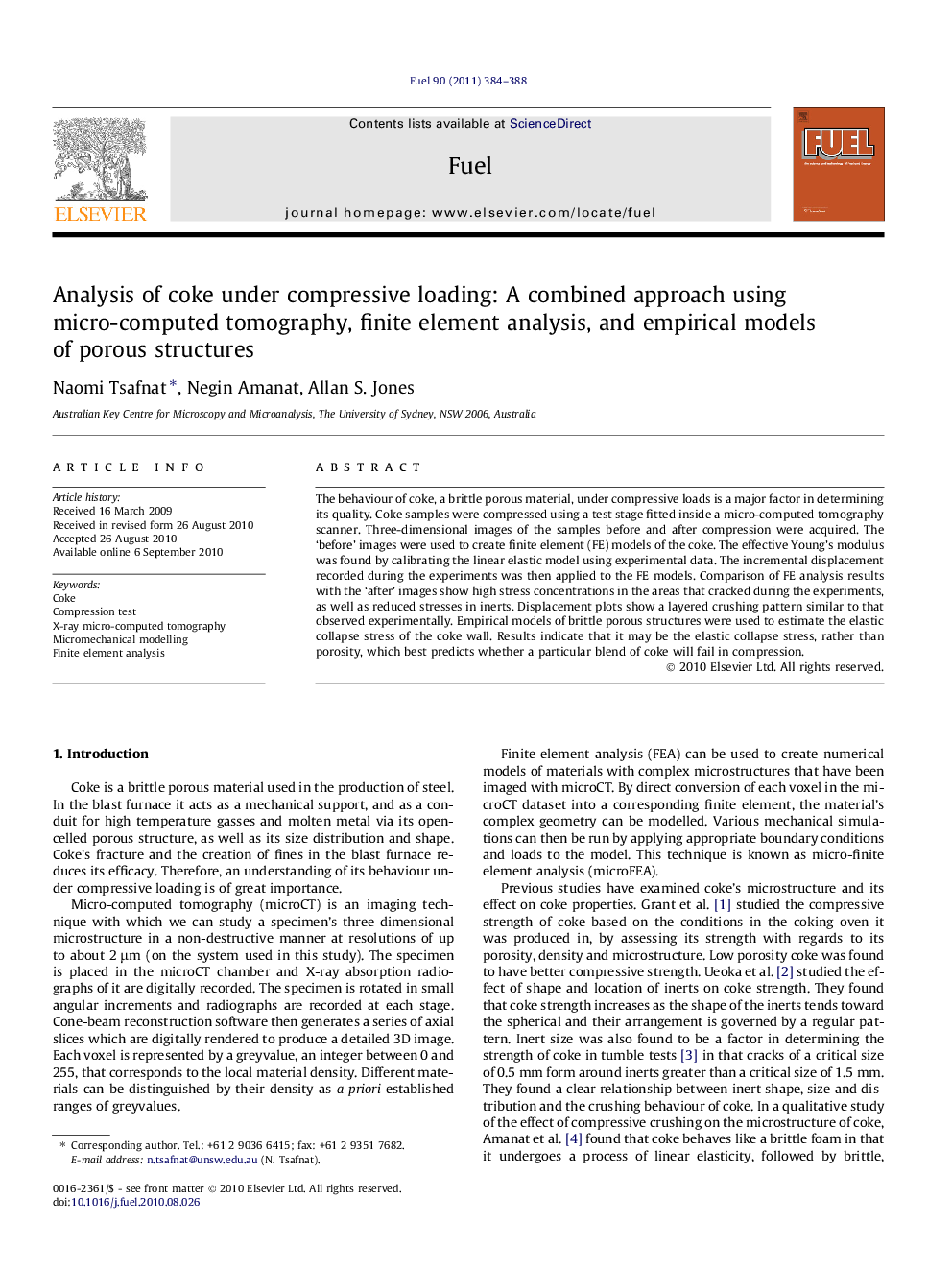| Article ID | Journal | Published Year | Pages | File Type |
|---|---|---|---|---|
| 206974 | Fuel | 2011 | 5 Pages |
The behaviour of coke, a brittle porous material, under compressive loads is a major factor in determining its quality. Coke samples were compressed using a test stage fitted inside a micro-computed tomography scanner. Three-dimensional images of the samples before and after compression were acquired. The ‘before’ images were used to create finite element (FE) models of the coke. The effective Young’s modulus was found by calibrating the linear elastic model using experimental data. The incremental displacement recorded during the experiments was then applied to the FE models. Comparison of FE analysis results with the ‘after’ images show high stress concentrations in the areas that cracked during the experiments, as well as reduced stresses in inerts. Displacement plots show a layered crushing pattern similar to that observed experimentally. Empirical models of brittle porous structures were used to estimate the elastic collapse stress of the coke wall. Results indicate that it may be the elastic collapse stress, rather than porosity, which best predicts whether a particular blend of coke will fail in compression.
